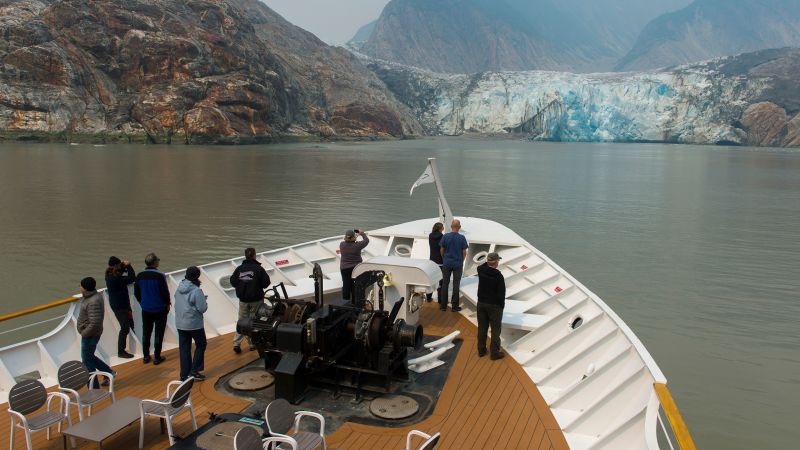It was a very early morning in August when an entire mountainside in Alaska’s Tracy Arm fjord detached and slid into the deep ocean water beneath it.
The slide created a gargantuan splash – a hyper-local, but massive tsunami that ran up the opposite mountain slope, leveling everything in its path as high as the Empire State Building. It ripped evergreens out of the ground, stripped a nearby island to bare rock and pulverized the glacial ice around it.
The whole episode lasted minutes.
About 15 miles away, a National Geographic cruise ship carrying around 150 passengers and crew started to move backward, pulled by suddenly shifting currents through an eerie fog.
And twenty miles across the fjord’s channel, three sea kayakers camping on high ground woke up to ocean water dripping into their tent, their gear strewn across the shore. One kayak was lost, swirling around in an ocean whirlpool.
It would take days for the scale of the split-second devastation to become clear, but experts say it was miraculous that no one was hurt or killed. The National Geographic cruise ship, in particular, was saved by the fact it was positioned behind an S-shaped bend in the fjord that blunted the impact of a wall of water rushing down the channel.
“That probably saved their lives,” said Jackie Caplan-Auerbach, a seismologist and professor at Western Washington University, who was in touch with the ship’s captain and relayed the tale to CNN.
But scientists who study these types of landslides are anxious it could happen again. Tracy Arm is a popular route for cruise ships packed with ice-chasing tourists eager for a glimpse of Arctic glaciers before they disappear.
“I’ve looked at the cruise ship schedules,” Caplan-Auerbach said. “On any given day, there are often a couple of cruise vessels with quite literally thousands of people aboard.”
High above the cold, clear waters of the Gulf of Alaska, the mountains are moving, inching down toward the water line.
All in all, scientists have mapped more than 1,000 instances of what they call “slow-moving landslides” in Alaska.
Continue Reading on CNN
This preview shows approximately 15% of the article. Read the full story on the publisher's website to support quality journalism.
